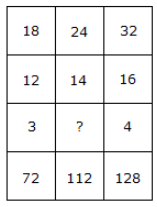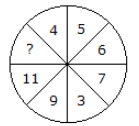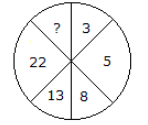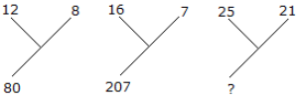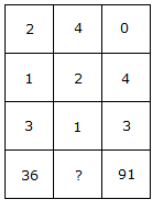In order to solve the given set of questions, you must assess the given piece of information, select the information that is important, and leave out the information that is not. Blood relations, arrangements, disparities, and other factors are frequently used in reasoning puzzles. The questions may test your lateral thinking rather than requiring deduction or analysis.
Puzzle concept in reasoning
The reasoning puzzle concept is totally dependent on logical analysis of the data provided in the puzzle. Candidates must solely analyse the material provided in the question and respond appropriately .
Types of puzzles in reasoning
The following five types of puzzle exam questions are possible :
1. Classification Type Question
This sort of question consists of questions in which the candidate is given things that belong to different groups or have distinct features, as well as a clue with which the candidate must organise and evaluate the items and answer the questions accordingly .
Ex. Examine the following details carefully and respond to the following questions :
(i)B and E excel at dramatics and computer science, respectively.
(ii) In Computer Science and Physics, A and B are strong..
(iii) Physics and mathematics are strong areas for A, D, and C.
(iv) C and A are excellent in history and dramatics.
(v) D and E are excellent in history and dramatics..
1. Who is talented in the fields of computer science, history, and drama?
Ans: D
2.Who are the experts in computer science, history, and dramatics?
Ans: C
2. Seating/Placing Arrangements
In this type of question, some hints are offered about the seating or placement sequence (linear or circular) of some people or goods. The candidate must use these clues to build the correct sequence and then respond to the question.
Ex: Read the following information and answer the questions that are given:
Nine Cricket fans are watching match in a stadium. J, K, L, M, N, O, P, Q, and R are seated in a row. L is at the right side of M and to the third place to the right of N. K is at one of the row’s ends. Both O and P are seated next to Q. O is to the third place on the left .
1. Who is the person in the middle of the row?
Ans : J
2. Who is on the other side of the row?
Ans : N
3. How many person between L and O?
Ans : There is one person between L and O.
3. Comparison Type Question
In this type of question, hints are offered about comparisons between a group of people or things in terms of another quality. The candidate must assess all of the data, create an ascending/descending sequence, and then respond to the questions appropriately.
Ex: Read the following information and answer the question given below it:
Alka is older than Mala. Mala is younger than Gopal, while Alka is older. Kapil is younger than Ram and Mala. Mala is older than Ram.
Q.1. Whose age is between Gopal and Ram?
Ans: Mala
Q.2. Whose age is between Mala and Kapil?
Ans: Ram
4. Sequential Order of Things
In this type of question, some information on the order in which particular events occur is provided. The candidate must analyse the facts provided, frame the proper sequence, and then respond to the questions appropriately.
Ex: Read the following information carefully to answer the given questions:
On consecutive Fridays, the films P, Q, R, S, T, and U will be released. The following requirements must be met in order for the release to take place:
(i) P must be released a week before T.
(ii) R must not be released immediately after the first release.
(iii) Q must be released on the Friday following the Friday on which U is released.
(iv) S must be launched on the fifth Friday and must not be followed by Q.
(v) T must not be released in the last.
1. Which of the following films preceded T?
Ans: P
2. Which of the following movies came out right after Q?
Ans: P
5. Selection Based on Given Conditions
A few fundamental criteria for selecting a group of objects are provided in such inquiries. The candidate must remember these conditions and choose the appropriate choice based on the guidelines provided in each question.
Ex:Study the following information carefully and answer the questions given below it:
A team of six is to be chosen from among six boys A, B, C, D, E, and F and five girls P, Q, R, S, and T under the following conditions:
(i) A and D should be placed together.
(ii) C cannot go with S.
(iii) S and T should be placed together.
(iv) B cannot be teamed with E.
(v) D cannot go with P
(vii) B and R have to be together.
(vii) C and Q must be together.
Q.1. If there is five boys in a team, the alone girl member is
Ans: Q.
Q.2.The team has three girls, including P, and the members are?
Ans: B, C, F, Q, R.
How to solve box puzzle reasoning
Firstly, collect all the direct information.
Arrange the raw data in a table manner.
Then, according to the given data, locate all the negative information and note it in your table.
Other information can be gleaned from the indirect data.
The most crucial lesson is that there will be multiple options in some situations.
As a result, arrange them in separate tables based on your options.
Reject any tables that contradict the puzzle’s other information.
You will arrive to the correct answer if you follow this procedure.
Most Puzzles are tricky. So, take care of every numbers.
Conclusion
Because it engages both the right and left sides of the brain, solving puzzles can be called a complete brain workout. The left side is responsible for logic, objectivity, and systematic thinking, whereas the right side is responsible for creativity, emotions, and intuitive thinking.
 Profile
Profile Settings
Settings Refer your friends
Refer your friends Sign out
Sign out





